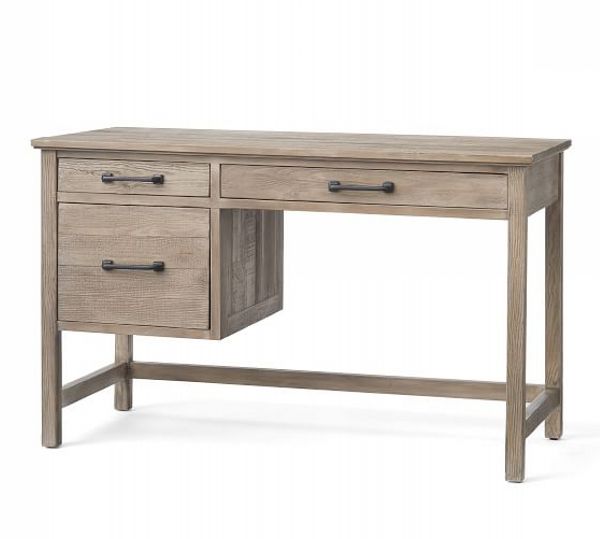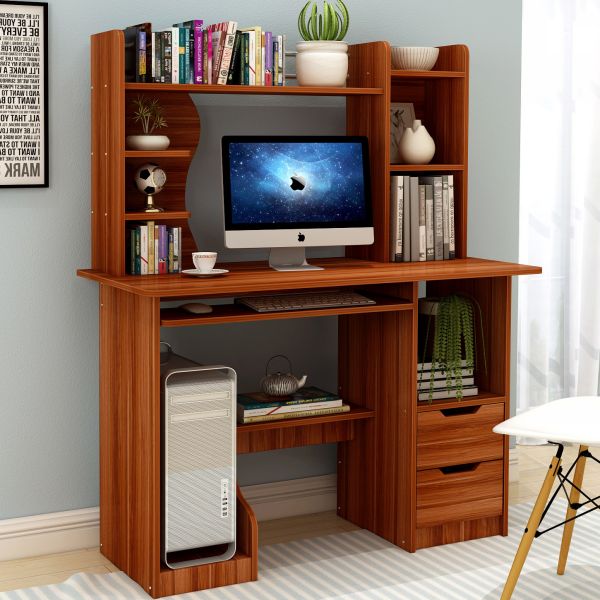DIY Office Worktable Diagrams - Things To Explore While Assembling A Sturdy Design
Drive a pair of 8d galvanized casing nails from opposite sides at each corner to pin miters together. Use a putty knife to spread it slightly beyond the edges of your template marks. To keep your bit from wandering as you drill, use a center punch to dent the steel at your mark. We've used drywall screws for all sorts of carpentry projects, with mixed results. That's all wiring you need to do for now. Add back side brace pieces to the inside of the box. Cut the excess plug with a handsaw and sand flush. Push it into corner and mark opposite end.
The screw holes were cut off when we craft the brackets to their final length. Shape the curves (helpful hints) by bending hardboard siding and scribing against it. Use a spirit level to check if frame of the table is horizontal, before inserting screws into legs. If you don't have room for a full-size permanent workbench but really need space to spread things out, this workbench is it. Keep the bottoms reasonably level, but don't beat yourself up over it. Instead, simply arrange slats by eye so that they appear uniform. These two holes will complete the pathway for front pipe support.
See more tips on how to paint a room fast. Buy a small tube of construction adhesive for this outdoor project. What's trickiest about cutting the slots is keeping track of the orientation of parts. Glue in the dowels to join the discs, and glue in handle. Then drive screws until heads are slightly recessed. Drill countersink clearance holes through slats and pilot holes into the brace, to avoid splitting. And hollow wall anchor is much larger than the cap-so it's that much harder to lose. Make an angle craft to top slat, as shown in the plans. The bottom of a 5-gallon bucket is perfect for marking cove.
Prevent the saw blade from binding on tight curves by using relief cuts to remove waste. Secure the cab end, middle and the trailing end with the straps. Using a 1-gallon paint can as a guide, draw the apron's arches on the small pieces you rip and glued to apron. The best way to ensure this is to make a drilling jig. This pair of accessories puts an end to this hidden wasteland. It's tempting to just squirt water into the dry concrete mix with a hose and mix up a soupy batch of concrete. The top rail is too thin to nail to face frame, so just nail it to the center stile and clamp it in place until the glue sets.
We bought a set of five and spaced them under the wall cabinets and shelves. There are a few different types of dovetail joints, but the most popular is half-blind dovetail joint and through dovetail joint. Oil-based poly, on the other hand, takes longer to dry, so airborne particles have a longer time to settle on and mar finish. Mark the pegboard holes you want to use and label end of template that goes against the bottom shelf. Then add corner boards, frieze boards, and finally the siding and top caps. A pro could grind out any imperfections and reshape the edge.
Twenty-plus years ago, he set out to design ultimate painter's bench. Cut a hole in the roof sheathing with your circular saw for cupola, then carry the unfinished cupola up to install it while it's still lightweight enough to maneuver. Apply mortar to only one-fourth of the top with your notched trowel and press tile into place. Any flaw that bearing encounters in the edges will be transferred to the new profile. Also, check out and learn lumber router basics. Lightly sand entire chair to 120 grit and it'll be ready for finish. You may have to shim under the cabinet to level it.
Be sure to blend the edge banding and ease any sharp edges. The air space also keeps them a lot easier to grab when you need to pull one out. You'll save measuring time by making a simple spacing jig as shown below.


